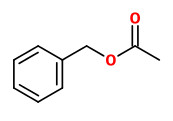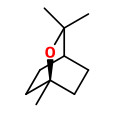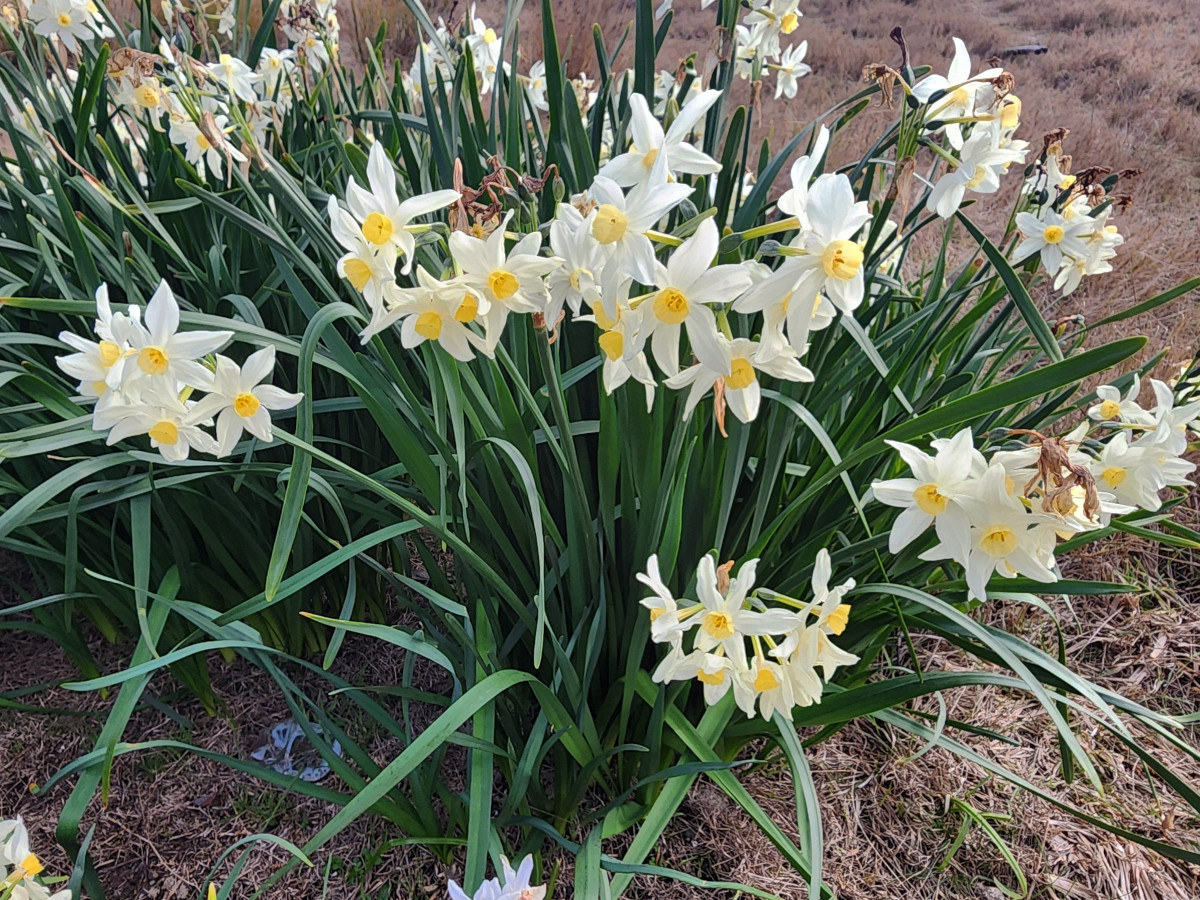Narcissus tazetta L. - Amaryllidaceae - bunchflowered narcissus, bunchflower daffodil, Chinese sacred lily, Strauß-Narzisse, Tazette
Perennial herb, up to 80cm tall, native to the Mediterranean region and West Asia, cultivated (as ornamental) and naturalized there; leaves lanceolate, greyish-green, up to 40cm long; flowers in umbels up to 8, white-yellow to yellow-orange.
Narcissus geranium = Narcissus x poetaz (= N. tazetta × N. poeticus) var.geranium : „From the large number
of narcissus plant varieties available, 12 odorous species were collected, and a panel of perfumers selected the species trevithian and geranium as having the most interesting odor… there is only a very limited number of components which are common to most Narcissus varieties: some higher n-alkanes, some cresols, benzyl acetate, methyl benzoate and benzyl benzoate, some terpenoids such as limonene, p-cymene, ocimene, linalool, terpinen-4-ol, 1,8-cineole, and α-terpineol, benzyl alcohol and phenethanol, 1-nonanal, and indole… On the basis of our findings, we agree with Loo and Richard (1986) that no character impact compounds are present in Narcissus.“
[Narcissus trevithian and Narcissus geranium: Analysis and synthesis of compounds.,van Dort, H. M., Jagers, P. P., ter Heide, R., van der Weerdt, A.J., Journal of agricultural and food chemistry, Vol.41(11), 1993, 2063-2075]
Main volatile components of Narcissus taztta var. chinensis flowers were benzyl acetate (24.1%), benzyl alcohol (21.0%), indole (6.3%), linalool (6.2%), and (E)-β-ocimene (4.6%) e.g.
[Arai, T. „Volatile compounds of Narcissus taztta var. chinensis flowers.“ Nippon Koryo Kyokai 184 (1994): 105-111.]
cit. TGSC: Typical G.C. analysis
narcissus tazetta var. chinensis absolute Retrieved 2025-11-01.
Volatiles of single-flowered and double-flowered Chinese narcissus were identified by headspace-solid phase microextraction (HS-SPME) coupled with GC and GC/MS. The main constituents were (E)-β-ocimene (62.7%-66.0%), benzyl acetate (11.6%-25.0%), (Z)-β-ocimene (1.8-4.6%), 1,8-cineole (1.4-4.0%), prenyl acetate (1.2-2.1%), and linalool (1.1.-1.7%). Minor components were e.g. α-terpineol (0.2%), methyl cinnamate (0.1%), phenyl ethyl acetate (0.3-1.1%), 3-hexenyl acetate (0.1%), and indole (0.3%)
[Headspace solid-phase microextraction analysis of volatile components in Narcissus tazetta var. chinensis Roem., Chen, H.C., Chi, H.S., Lin, L.Y., Molecules, Vol.18(11), 2013, 13723-13734] PDF
 (E)-β-ocimene (sweet herbal) |  (Z)-β-ocimene (floral) |  benzyl acetate (sweet floral) |  1.8-cineole |  indole |
Narcissus spec.: „Six volatile compounds with a percentage above 2% were identified in the simple flowers. Daytime volatile profile revealed benzyl acetate as major compound with 37.35%, followed by cis-β-ocimene with 34.86%. Further important volatiles were indole with 4.61%, 1,2-bis(1,1-dimethylethyl)-benzene with 3.57%, trans-β-ocimene with 2.32%, 2,4-bis(1,1-dimethylethyl)-phenol with 1.95% and dodecane with 0.75%. Volatiles below 2% summed up to 14.59% of total emission. In summary, only two compounds, benzyl acetate and cis-β-ocimene can contribute 75% of the daytime scent emission. During the night emission, benzyl acetate and cis-β-ocimene contributed mainly to the scent, but their emission levels decreased, comprising lower proportions of the total than during daytime with 30.74% and 27.24%, respectively.
Compound flowers emitted 11 different major compounds during daytime. The most abundant compound was cis-
β-ocimene with 21.85%, followed by benzyl acetate with 19.33%. Five compounds accounted for between 8 and 5%, including eucalyptol, acetic acid penylethyl ester, hydroxycinnamyl acetate, benzene tert-butyl-benzene and β-linalool. Indole, 1,3-bis(1,1-dimethylethyl) benzene and 2-buten-1-ol-3-methylacetate accounted each for approx. 2% to VOC, while the total of minor compounds accounted for 16.56%. During the evening, cis-β-ocimene and benzyl acetate also formed the principal volatiles (Fig. 4). Cis-β-ocimene declined slightly to 21.19%, while the proportion of benzyl acetate increased to 21.65%, constituting the most prominent VOC.“
[Optimization of fragrance extraction: Daytime and flower age affect scent emission in simple and double narcissi., Ruíz-Ramón, F., Águila, D.J., Egea-Cortines, M., Weiss, J., Industrial Crops and Products, Vol.52, 2014, 671-678]

Narcissus tazetta, Ulverstone, Tasmania (2025) © Phil Collier CC BY-SA 4.0 inaturalist.org

Narcissus tazetta L., angel’s Tears, Chinese sacred lily, daffodil
Redouté, P.J., Choix des plus belles fleurs et des plus beaux fruits, t.5 (1833) plantgenera.org